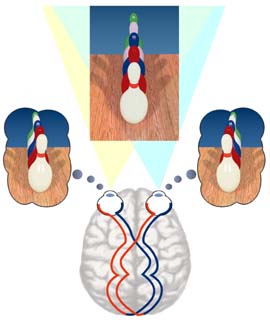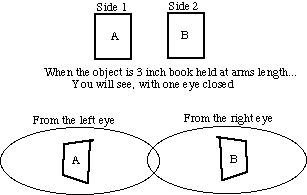|
How Do I See Depth?
We are 3D creatures, living in a 3D world but our eyes can show us only two dimensions. The depth that we all think we can see is merely a trick that our brains have learned; a byproduct of evolution putting our eyes on the front of our faces. To prove this, close one eye and try to play tennis. The miracle of our depth perception comes from our brain's ability to put together two 2D images in such a way as to extrapolate depth. This is called stereoscopic vision.
It works like this. Because your eyes are separated on your face, each retina produces a slightly different image. That difference in images is a direct result of the depth of the objects that we are looking at.
When those two images are assembled in your brain, they are interpreted as depth. Stereoscopic vision works most effectively for distances up to 18 feet. Beyond this distance, your brain starts using relative size and motion to determine depth. 3D stereoscopic imaging is as simple as producing two slightly different images - the same as your eyes would produce - and then showing each eye only one of those images. This can be done with light-refraction, color-filtering, or light polarization. |

